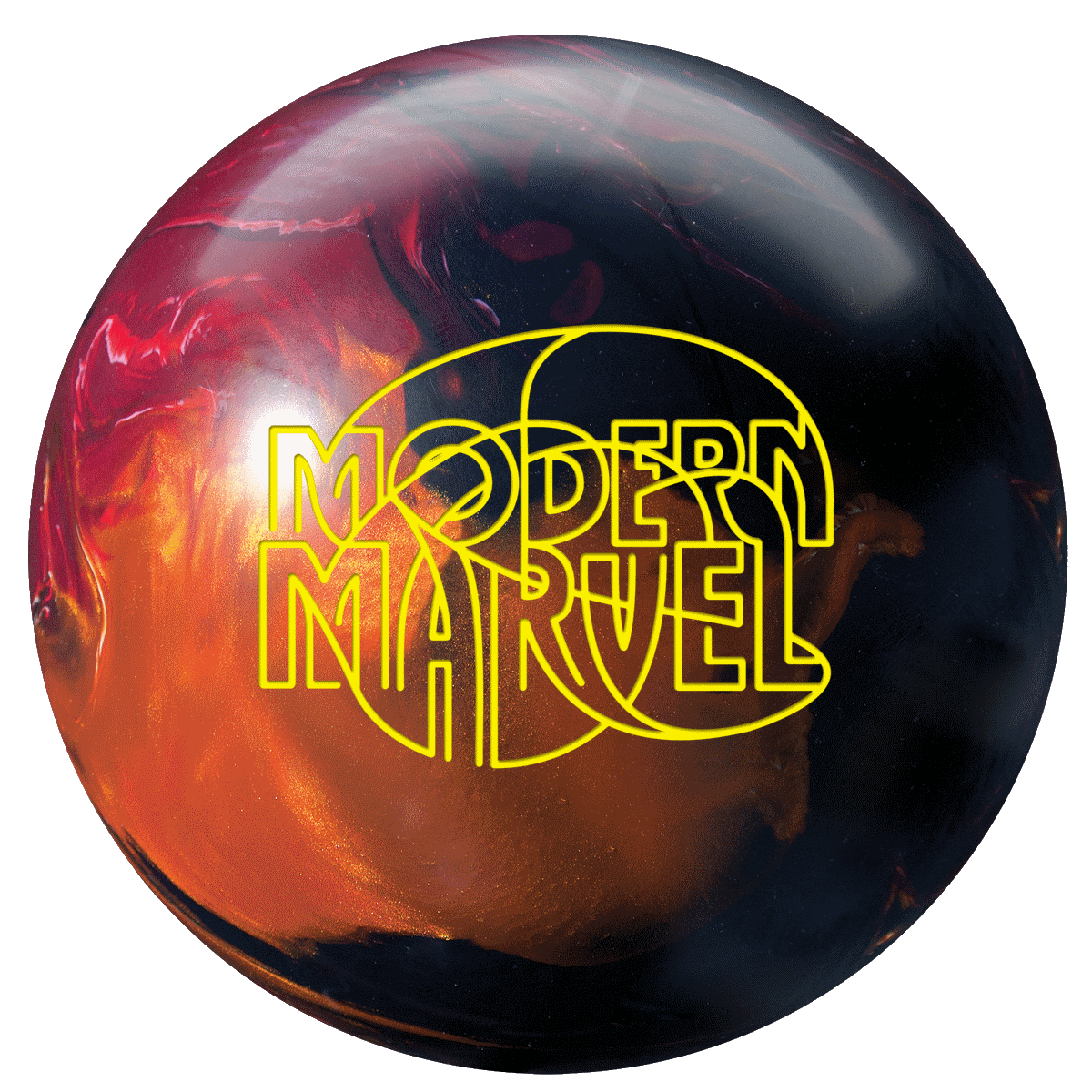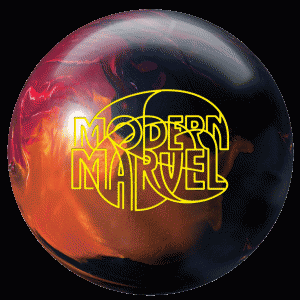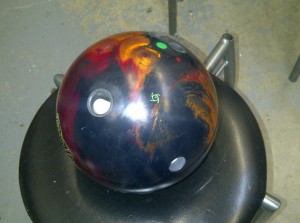A Modern Benchmark…
This time, we test the Storm Modern Marvel. As usual, keep in mind that the coverstock will account for 70% of ball reaction while the core characteristics and drilling will dictate the shape of the reaction. The test piece was drilled 60x5x80. Generally speaking, this will delay the roll and have a smooth transition at the breakpoint with good flare. Larry Salvati tested on the Kegel Main Street representing a Typical House Shot (THS) and the 2012 USBC Championship Open pattern. Main Street is a 41 foot tapered pattern. The USBC is a sport compliant 39 foot shot with a 2:1 ratio.
Please work with your local pro shop operator to find what best works for you.
First Impressions
It was pretty clear the Storm Modern Marvel is a ball that smooths everything out. That’s typical in a really good benchmark ball.
Price 8.5/10
This is in Storm’s Master Line so it’s not inexpensive.
Core
The Centripetal core is again the heart of this Marvel linemate. As a symmetrical core, it has an RG of 2.48 and differential of .050 for a 15 pound ball. We’ve seen it starting in the Prodigy, then Marvel, Marvel Pearl, and now the Modern Marvel. This a smooth, early revving core. However, seeing what it is capable of doing with the different covers shows its versatility.
Cover 9/10
The cover is the R2X hybrid reactive. Storm is now famous for their ability to create awesome hybrid coverstocks, giving the smoothness of the solid with the backend punch of the pearl. This is akin to a third generation Reactor cover, after the original Reactor and venerable R2S. It’s tweakable like all of the Reactor covers. It really offers that nice balance of smoothness and angle which lends it to being a benchmark-type ball.
Reaction 9.0/10
For Larry, this ball just seemed to work on everything, period. Larry is a stroker with medium speed and low/medium revolutions (revs). This ball offers a very nice midlane read with good movement and continuation at the breakpoint. It seemed to create an excellent entry angle for carry. Our tester will not generally be generating very large entry angles, but this ball seems to store just the right amount of energy.
Don’t mistake this ball for the more arc reaction of the original Marvel, nor is it the more flippy reaction of the Marvel Pearl. This ball really is smack-dab in the middle. There was a pretty big gap between the Marvel and Marvel Pearl and the Modern Marvel couldn’t have been designed better to fill that gap. It offers what I would consider a benchmark reaction. In theory, it’s similar to the Prodigy reaction, but a bit cleaner through the fronts. When I first saw it out of box, I just thought it might be too strong a ball. However, the balance of control and power just work like magic.
On the Kegel Main Street (THS), the ball was so easy for our tester to get to the pocket and carried extremely well. On the USBC pattern, he could use two distinct lines, from outside and inside. While the entry angle looks pretty small from the inside, the ball carried amazingly well from there. It really stored the right amount of energy for our tester.
What if you have more hand than our tester? Well expect a bigger reaction of course. If the condition you face isn’t at least medium or heavier, it may just make your life a bit harder. It is a control ball so you could chase in and watch the ball reaction to get the desired line to the pocket. Benchmark balls are capable of this.
The findings from Digitrax are quite interesting and intriguing. It should give you a much clearer understanding of what happens on house shots vs sport shots. In the Digitrax analysis, we compare the Modern Marvel to the Marvel Pearl.
Let’s assess the THS tracking first. For our tester, these 2 balls are quite similar to the pocket. The difference in the strikeline is almost negligible. That’s because many balls will react very similarly on a house shot. Forgiveness will be the difference. Larry is an accomplished bowler so he can be very accurate. However, the Modern Marvel gave him room to miss and still carry quite well. On the right line, the Marvel Pearl reacted the same way for him. However, misses will be amplified because the polished pearl cover of the Marvel Pearl will not aid as much in smoothing out the reaction like the hybrid cover of the Modern Marvel.
Now, let’s have a look at the sport pattern ball reaction. Here, the difference is obvious and noticeable. Although he used more or less the same line to the pocket, the reaction from the midlane to the pins is quite different. The Modern Marvel hooked up earlier for a 2 foot shorter breakpoint, while creating a nice smooth move to the pocket. That smoothness didn’t negatively affect the entry angle. In fact, it actually generated a higher entry angle. The Marvel Pearl naturally went longer, 2 feet longer in this case, then made a bit more defined break towards the pocket. You would think the entry angle would be higher, but I guess the quicker reaction to the dry boards actually burned up slightly more energy in the transition.
Overall 9/10
The Modern Marvel is a quite nice offering from Storm. It really serves as a nice benchmark ball with it’s nice midlane read and strong roll and continuation. It worked equally well on a house shot and a sport shot. The USBC pattern is 2:1 ratio so not an easy pattern by any means. However, the ball just worked so well on the tough pattern. If you are a stroker, this will be a nice balance. It won’t burn as much energy as the really strong balls and won’t be uncontrollable like the skid/flippy type balls. For folks with more hand, this will still be a smooth ball that can generate a very strong overall motion, while providing that nice backend punch that we like to see.





